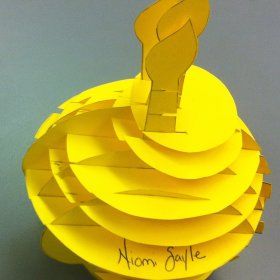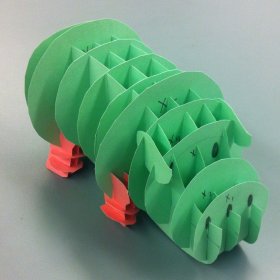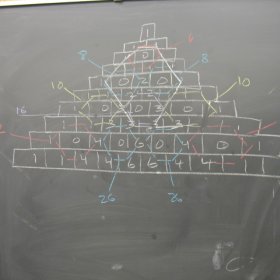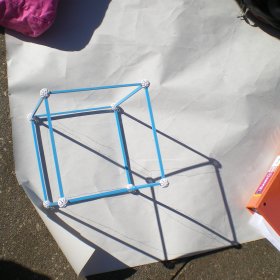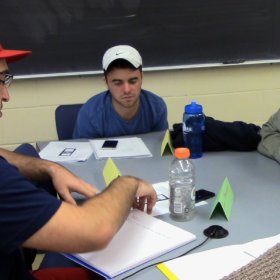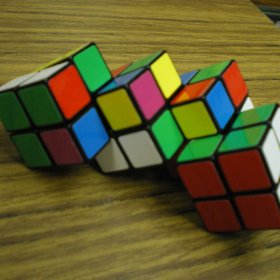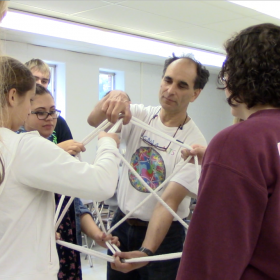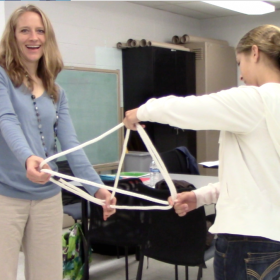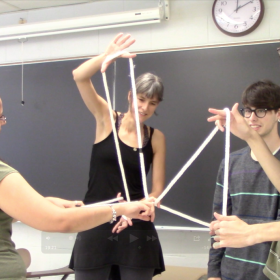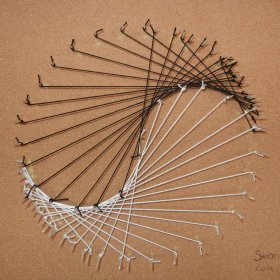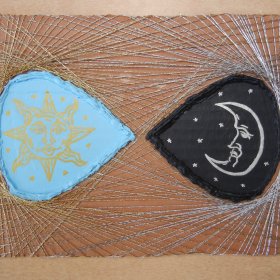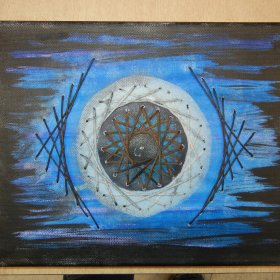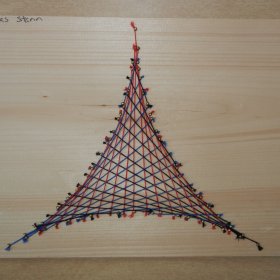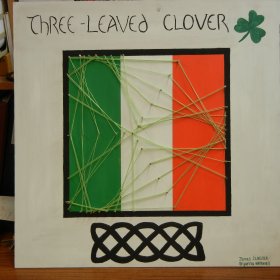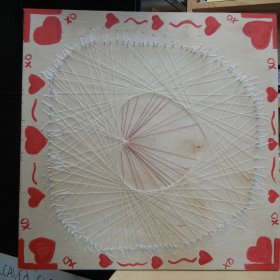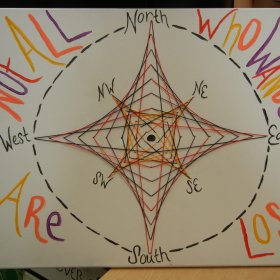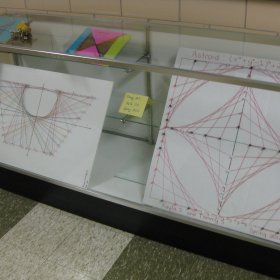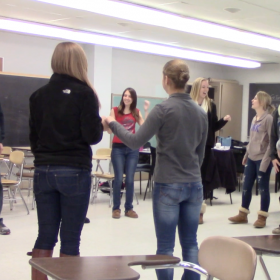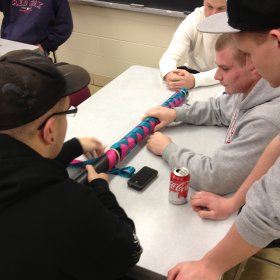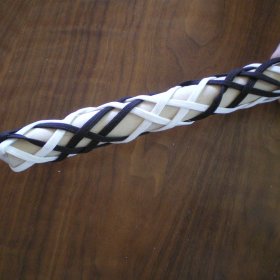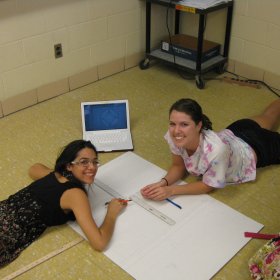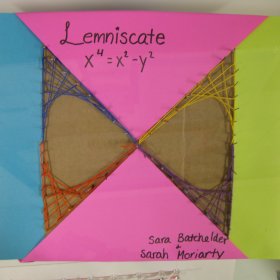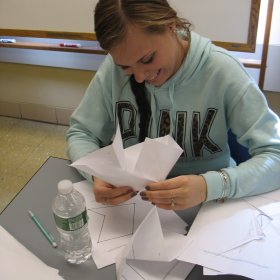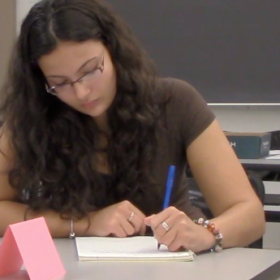The images and videos in the Art of Mathematics media library showcase the active student involvement in our classrooms and the decentralized role of the instructor. You can browse the most recent images and videos shown below or search for specific examples of student activities, e.g. search for "Pick's Theorem" in videos to watch a small group of students investigating the areas of polygons on a geoboard.
Media Library
Multiple search terms will be joined with AND by default. You can also enter OR to widen your search, e.g. searching for maypole OR salsa will return all results containing either maypole or salsa. To reset or clear the search, delete all terms and click update again.
Pages
Perhaps the best way to understand the depth and powerful impact of our project is to read what the students have to say about their experiences. The following student quotes, collected during the project, are typical responses received as part of student journals, essays and reflections.
Multiple search terms will be joined with AND by default. You can also enter OR to widen your search, e.g. searching for maypole OR salsa will return all results containing either maypole or salsa. To reset or clear the search, delete all terms and click search again.
You know something that I find strange? Sometimes I actually feel kind of smart mathematically. I'm not used to being able to comprehend or even work out problems in mathematics, and since this course, this new and strange phenomena has occurred.
Opening up the spectrum of math is how this course cleared up the misconception that math is simply computations and solving equations... Math became a wider subject in this course.
It's nice to have a class in a relaxed area/environment for a change. Being treated like a person and not an inferior 'student.'
This material was helpful in creating an alternative to lecture-dominated classes. I used some of these materials and modified some of them to fit my own purposes in the course. They also helped me by providing a structure which I mimicked in creating my own materials… [The students] were certainly actively engaged.
… I think the hands-on approach is very useful, in engaging students who might have the idea that math is a dry, boring subject.
…The concept of dimension is explained well, beginning with an intuitive notion and then proceeding to a more precisely defined topological definition of dimension. I really wish I had time to go through the section on fractal dimension, which I had to cut due to time constraints.
… I really liked the intuitive introduction to topology, as well as the intuitive working definition of topological invariance. The maps were good starting examples of topologically deformed objects.
The general approach is amazing. I love how you get to touch upon and substantially develop so much modern analysis, in this unassuming volume for liberal arts students. I also found the way you introduced the concepts very well thought-out.
…The one guidebook I read does a great job at putting the student at the center of the action, and encourages independent inquiry… I do think you require a lot from the students, but they should be able to follow the text to wherever they like as long as they commit to keeping their intellectual spirit and curiosity alive.
…I was impressed by how much actual mathematics there was in the whole volume, as opposed to some other math for liberal arts texts that are a lot less substantial in level and content… I think the intellectual merit of this work is very high, and it is a very valuable endeavor. Liberal arts students should not be left to only learn about watered-down pizza math. They should be introduced to the most beautiful and powerful ideas of mathematics; this project is attempting to do precisely that.
…By bringing in the human components of mathematics, the projects actually help students from underprivileged and underrepresented groups feel more welcome in what is generally regarded as a cold, austere science.
I reviewed parts of 5 books being produced for this project.
…I find the material to be excellent in all respects. This is a great idea for a project, and the people involved are clearly able to execute their vision. I really hope that enough resources are available to complete all the books.
…I strongly encourage the project principles to seek another, larger, grant to enable them to complete this project. I am impressed by the amount of work which has been done on a very small budget, but it will take a lot more.
…I think that the final collection of Discovering the Art of Mathematics books will be a resource that instructors have needed for a long time. These books will have a strong positive impact on the way mathematics is taught to non-science majors at a wide variety of colleges.
Your materials demand more active involvement on the part of the students. No “correct” answers or interpretations are given for much of it. This forces the students to make sense of it, come up with their own meaning and communicate with classmates, and get confirmation/support or other ideas from peers. The experience of doing just that will stick with them much longer than material from a traditional liberal arts math class. Your topics are less common but not less mathematical. They are a refreshing change.
As well as learning how a mathematician works, and how conjecture and hypothesis becomes theory, I think that students will get an experience of learning how they can go about learning something new, and maybe in the future, they might tackle something brand new that they might not have had the courage to do without the experience of working through some of your materials.
…The “hands-on” nature of your treatment is the real thing that makes it alluring and engaging. This is the big difference between what you are creating and what is available currently.
I like the wide variety of topics, and equally diverse examples that illustrate what mathematicians find so appealing in numbers, patterns, and space. The text and exercises make connections between theory and applications (e.g. primes, congruences, and encryption) and also between the ancient and the quite recent (e.g. the Pythagorean Theorem and the conquest of Fermat’s Last Theorem). I have no doubt that many students, previously bored with mathematics, will find the explorations in these tests to be engaging.
…I am particularly impressed with his coverage of significant ideas and their development through a historical context.
I have reviewed several of Professor Fleron’s manuscripts, and I must say that they are quite fun to read. I can imagine using them for some of my mathematical outreach activities. The samples he has produced are a very good indication of his commitment to education.
I am deeply impressed by the work you have done, both in its quality and in the sheer magnitude of the project.
…[Discovering the Art of Mathematics – Geometry] is a fresh approach to geometry for undergraduates who are not mathematics majors. The choice of material is excellent, as is the idea of linking it to visual art. The overall result is a very original and appealing idea for a course. This first draft is very promising, even though it is still in very rough form and needs a lot of polishing.
…the idea of dimension, and, in particular, the geometry of four dimensions and fractals, is a particularly interesting choice in a course for liberal arts undergraduates, because of the rich connections with other aspects of culture, and with art in particular. The students may know little about art, but the authors have realized, correctly, that art can motivate the study of mathematics. They exploit this idea boldly and on the whole successfully to produce, in effect, a multidimensional approach to the study of dimension. I support this idea enthusiastically.
For me, the main purpose of a course in mathematics in the liberal arts (an MLA course) is to get the students in it to use their heads… MLA courses give them other benefits as well—widening their cultural horizons, improving their writing, and so on—but getting them to think is the main one.
The material in Discovering the Art of Number Theory (ANT for short) will do the job.
…When in its final form, ANT will admirably serve to meet the goals on MLA courses. I wish it every success.
We work in groups every day on chapters the Professor and his colleagues have put together just for us. With the lessons, it feels like he purposely starts off with the irrelevant, basic steps then the problems become a little more difficult as the packet goes on. By the end of the chapter, there are several small pictures that we have discovered that suddenly all connect to make one astounding realization. It's almost as though specific problems were chosen with the direct intention of blowing our minds every time and I love it.
The structure of the packets [chapters] and the variety of exercises was very good. The structure lent itself to a class in which students take primary responsibility and engage in the mathematical process. As this was a primary goal for me, the packets [chapters] were ideal.
…I was surprised by how into it some of the students got and how they were much more interested in developing their own solutions than in following the path laid out for them.
…I would say [the materials influenced my way of teaching this class] dramatically. It made it possible for me to design an inquiry course since the question sequences were already done. It also provided a good model so that I was able to write my own packet [chapter] on Impartial Games, extending the ideas from Nim.
Discovering the Art of Number Theory is delightful… When I was teaching an MLA courses here at Penn State… I never found a text that was close to what I needed. Prof. Fleron’s text fits the bill… [And] what is so nice is the fact that this is very much in the R.L. Moore style.

